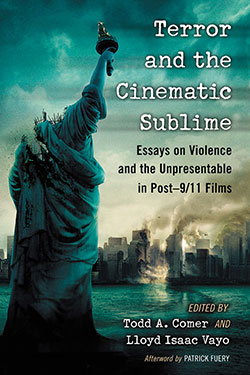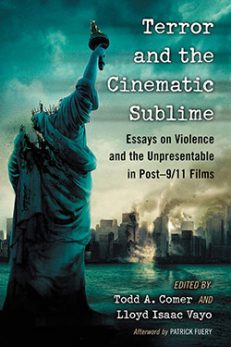Terror and the Cinematic Sublime
Essays on Violence and the Unpresentable in Post–9/11 Films
Original price was: $29.95.$14.99Current price is: $14.99.
In stock
About the Book
This collection considers film in the aftermath of September 11, 2001. Eleven essayists address Hollywood movies, indie film, and post-cinematic media, including theatrical films by directors such as Steven Spielberg, Darren Aronofsky, Quentin Tarantino and Spike Lee, and post-cinematic works by Wafaa Bilal, Douglas Gordon and Peter Tscherkassky, among others. All of the essays are written with an eye to what may be the central concept of our time, the sublime. The sublime—that which can be thought but not represented (the “unpresentable”)—provides a ready tool for analyses of trauma, horror, catastrophe and apocalypse, the military-industrial complex, the end of humanism and the limits of freedom. Such essays take the pulse of our cultural moment, while also providing the reader with a sense of the nature of the sublime in critical work, and how it continues to evolve conceptually in the 21st century.
About the Author(s)
Bibliographic Details
Edited by Todd A. Comer and Lloyd Isaac Vayo
Format: softcover (6 x 9)
Pages: 216
Bibliographic Info: notes, bibliography, index
Copyright Date: 2013
pISBN: 978-0-7864-7207-9
eISBN: 978-1-4766-0176-2
Imprint: McFarland
Table of Contents
Preface and Acknowledgments 1
Introduction: Terror and the (Post)Cinematic Sublime
Todd A. Comer and Lloyd Isaac Vayo 5
Hits and Missives: Excluding/Embracing 9/11
Plummeting to the Pavement: The Fall of the Body in Spider-Man
Kartik Nair 15
When Does the Hurting Stop? Cloverfield and the (Re)Enabling of Fantasy in the Post-9/11 City
Scott Wilson 29
Keeping Terror Alive: The Political Economy of Visibility in Inside
Man Sven Cvek 42
Pushing the Enveloped: Exposing the Limits of Freedom
Aronofsky’s Cinematic Vision and the Ethical Meaning of Freedom as the Sublime Horizon of Amor Fati
Donald Callen 57
The Apocalyptic Sublime: Hollywood Disaster Films and Donnie Darko
Seung-hoon Jeong 72
History Is Always Virgin: Quentin Tarantino’s Inglourious Basterds and the Lyotardian Sublime
Marco Grosoli 88
Tarrying with Sublimity: The Limits of Cinematic Form in Duncan Jones’ Source Code
Michael J. Blouin 103
Communiqué-tion Breakdown: (Post)Cinematic Interruptions
Pleasure and Pain: Post-Cinematic Remakes
Holly Willis 119
Watching the World Burn: Intensity, Absurdity and Echoes of the Sublime in Contemporary Science Fiction Destruction
John P. Warton 134
The AIllusion: Intelligent Machines, Jacques Derrida’s “Ethical Turn” and Oren Peli’s Paranormal Activity
Larrie Dudenhoeffer 150
The Indigestibility of the World: Birthing the Posthuman in Spielberg’s A.I.
Todd A. Comer 165
Afterword: Afterwards
Patrick Fuery 181
Selected Bibliography 187
About the Contributors 199
Index 201





